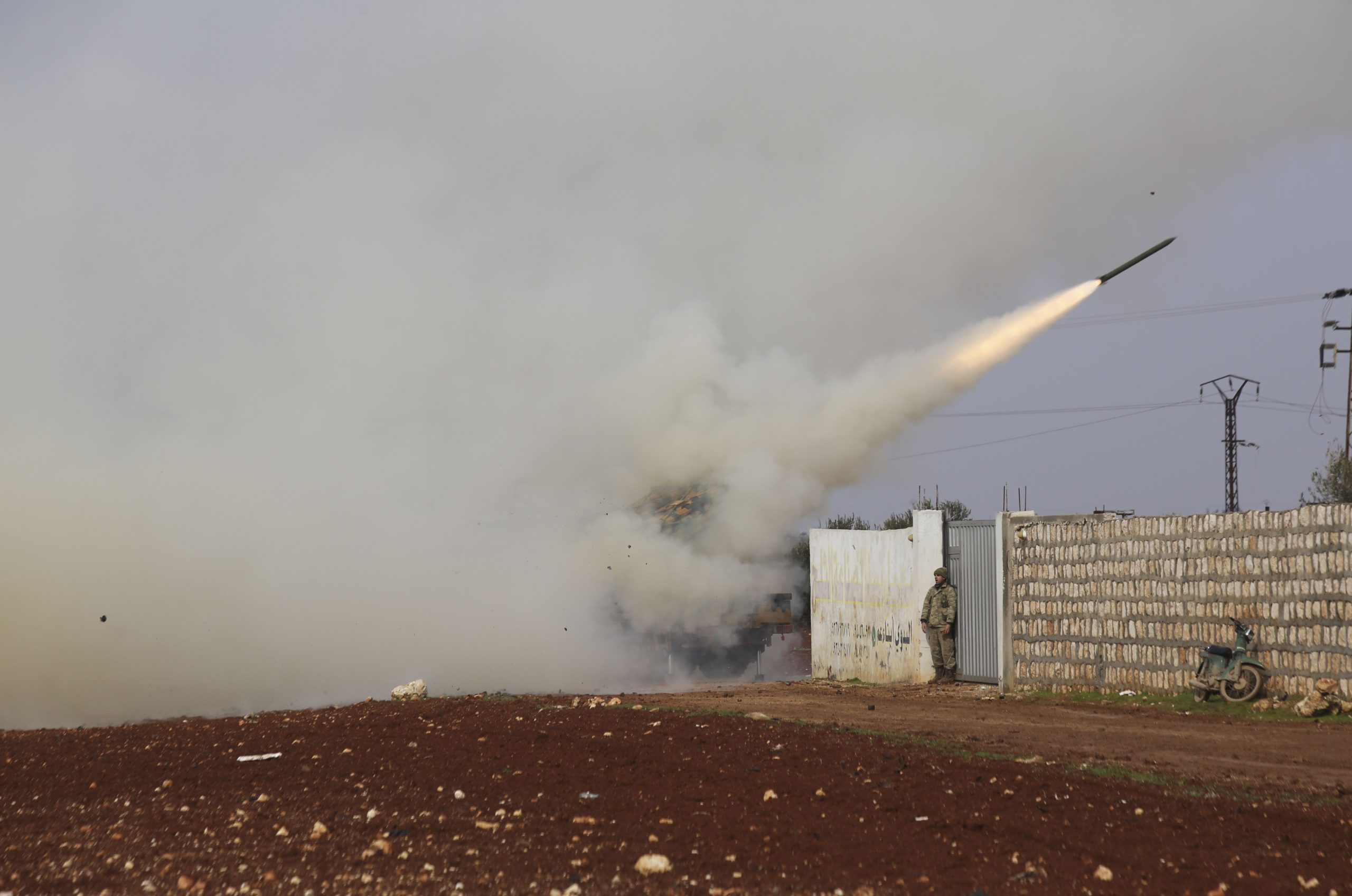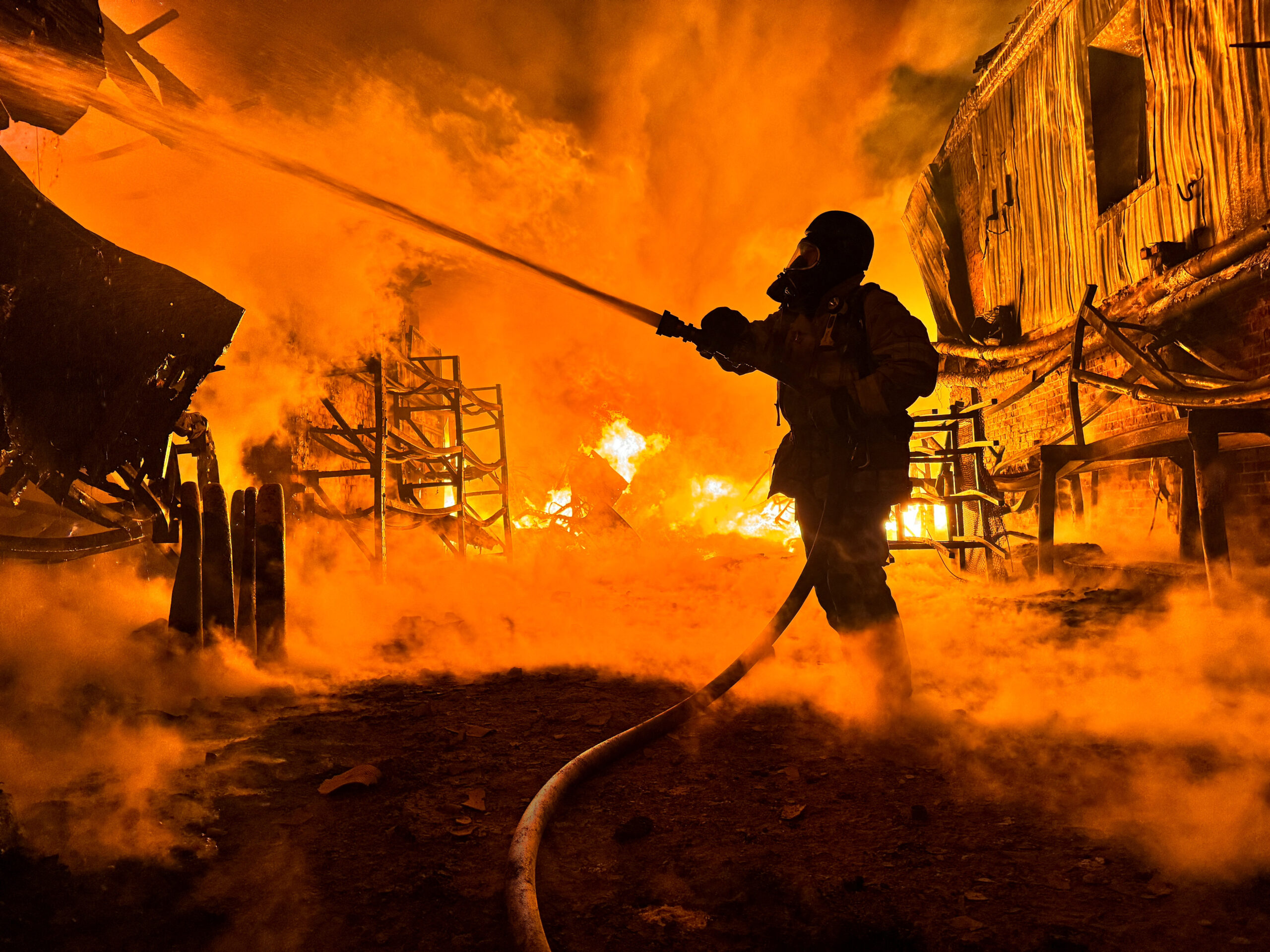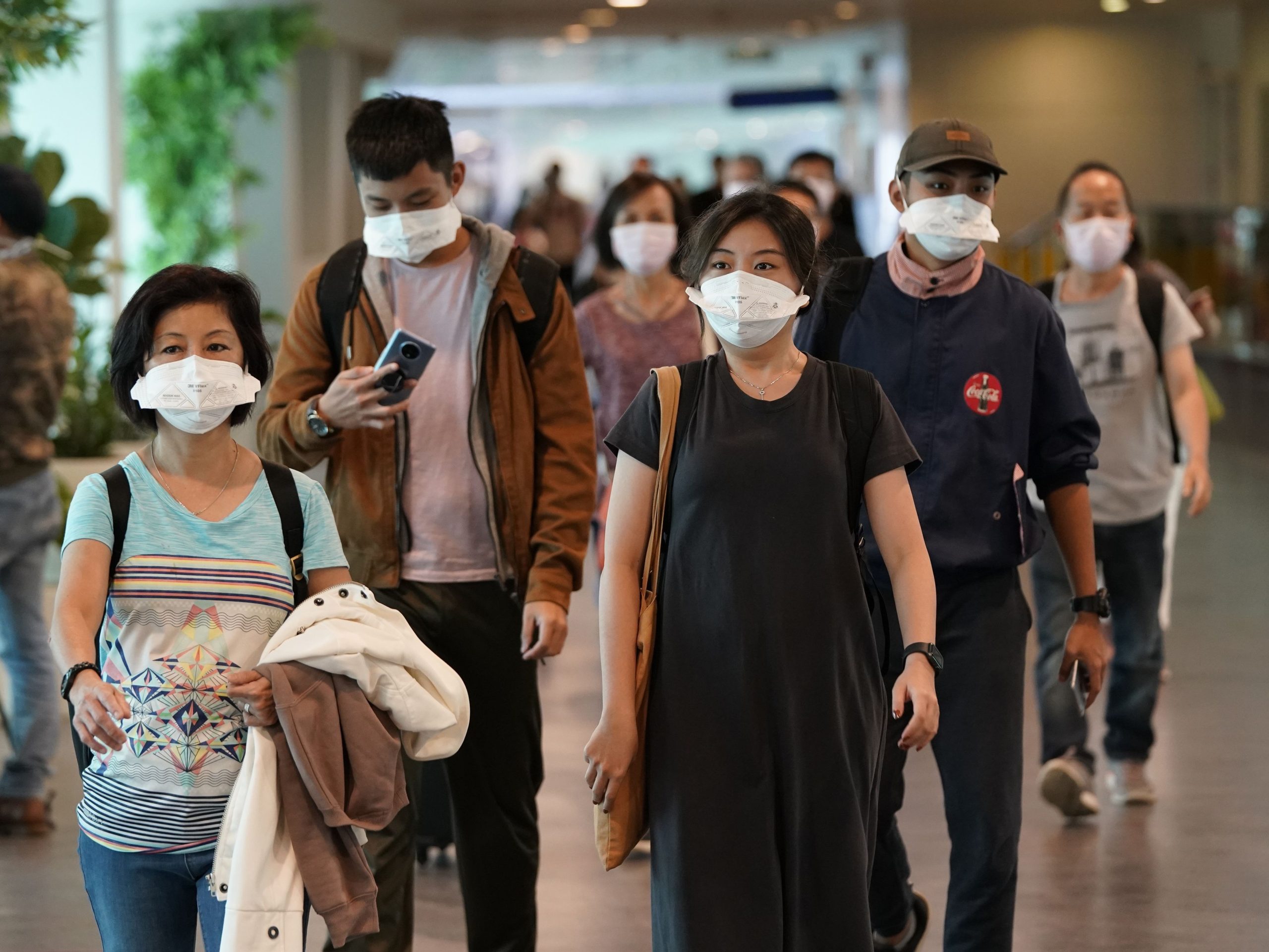Syrian war pulls in major foreign actors, increasing tension
 FILE - In this Feb. 14, 2020, file photo Turkish soldiers fire a missile at Syrian government position in the province of Idlib, Syria. Syria’s civil war has long provided a free-for-all battlefield for proxy fighters. But in its ninth year, the war is drawing major foreign actors into direct conflict, with the threat of all-out confrontations becoming a real possibility. (AP Photo/Ghaith Alsayed, File)
FILE - In this Feb. 14, 2020, file photo Turkish soldiers fire a missile at Syrian government position in the province of Idlib, Syria. Syria’s civil war has long provided a free-for-all battlefield for proxy fighters. But in its ninth year, the war is drawing major foreign actors into direct conflict, with the threat of all-out confrontations becoming a real possibility. (AP Photo/Ghaith Alsayed, File)In northern Syria, heavy exchanges between Syrian and Turkish troops are erupting with more frequency, threatening to escalate into full-blown conflict. Russian and U.S. convoys crisscross each other on remote dirt roads, the tension between them on full display. U.S. troops even have had a deadly clash with Syrian gunmen at a checkpoint.
Syria’s civil war long has provided a free-for-all battlefield for proxy fighters. But in its ninth year, it is drawing major foreign actors into direct conflict, with the threat of all-out confrontations becoming a real possibility.
In the northwest, the Syrian government’s Russia-backed military offensive to recapture Idlib, the country’s last opposition-controlled region, has infuriated Ankara, which has poured in thousands of troops in response. In the northeast, U.S. troops on a murky mission to protect oil fields find themselves an increasing target as government troops exhibit more confidence.
The result is a battlefield so fraught with tensions that every day brings the potential for an incident or a miscalculation that could ignite broader violence.-
On Thursday, Turkish forces and Turkey-backed rebels attacked government troops in Idlib, and Russian warplanes struck back. Two Turkish soldiers were killed in the incident, bringing the number of Turkish troops killed in Idlib this month to 15. Later, Turkey said it had asked the U.S. to deploy Patriot missile defense systems on Turkey’s border with Syria to guard against possible attacks from Syrian territory.
A look at the foreign actors and how they’re involved in northern Syria:
TURKEY
Syria’s northern neighbor was an early backer of the Syrian opposition, providing crucial logistical support as well as weapons and funding for the rebels who took up arms against Syrian President Bashar Assad.
Nine years later, Turkey has essentially lost that war. Idlib province, near the Turkish border, is the last region still held by the rebels. That’s why for Ankara, it has become an existential problem.
The Syrian government’s rapid military advances in Idlib threaten areas of the border farther north that were captured inTurkey’sincursions. Ankara, which hosts more than 3.5 million Syrian refugees, is also worried that an attack on the provincial capital and its surroundings will push 2 million more people toward its border, putting it under enormous pressure to let some of them in.
In the last two weeks, it has sent thousands of additional troops to Syria to try to stem the government’s advances, triggering clashes with Syrian government troops. So far, talks between Russia and Turkey to reduce tensions have failed to bring results.
Now, Turkish President Recep Tayyip Erdogan is threatening a larger operation to halt Syria’s current offensive, but to do that would be to risk a direct confrontation with Moscow that Ankara can ill-afford to have.
RUSSIA
If there has been a constant in the Syrian war, it is Russia’s unwavering support for Assad.
Russia has waged a military campaign in Syria since September 2015, allowing Assad’s government to reclaim control over most of the country. The cost has been huge: Whole cities have been destroyed, mostly by indiscriminate Russian bombardment.
But Syria, and its naval base in Tartus, gives Moscow a strategic foothold in the Mediterranean, and Russia is determined to go all out to protect it.
Moscow has blamed Turkey for the collapse of a cease-fire in Idlib, accusing Ankara of “provoking further escalation” by continuing to offer military support for militants in violation of the 2018 agreement.
Russia moved to fill the vacuum left by the United States last year after U.S. President Donald Trump ordered the pullout of American forces in northeastern Syria, deploying its troops to keep apart Syrian and Turkish forces.
That made Moscow the ultimate power broker, mediator and winner of the war — maintaining cooperation with all the players, including the Kurds, Turkey and even the United States, with whom it operates a so-called deconfliction line to defuse tensions.
UNITED STATES
While Trump ordered U.S. troops to withdraw from Syria last year, his military commanders and advisers later convinced him to keep a scaled-back force to protect Kurdish-controlled oil fields and facilities form falling into the hands of militants from the Islamic State group.
According to officials, there are about 750 U.S. troops in eastern Syria, spread across a swath of land that stretches more than 90 miles (150 kilometers) from Deir el-Zour to the border region east of al-Hassakeh.
They patrol a region crowded with other troops, including the Russians, Syrian government troops and even Iranian proxy forces not too far away.
But it is clear who has the upper hand.
Earlier this month, U.S. troops shot and killed a man after their convoy came under attack near a checkpoint manned by pro-Assad forces on a remote road east of the city of Qamishli in northeastern Syria. The convoy was attacked by stones and firebombs, and a man was seen firing at the convoy with a rifle. An American vehicle got stuck in the dirt, apparently having veered into a ditch, while another had a flat tire.
At one point in the melee, a Russian army convoy arrived on the scene, apparently to mediate. Images showed vehicles bearing Russian, U.S. and Syrian flags all in one frame.
The Russian Defense Ministry said the arrival of Russian troops prevented “further escalation of the conflict.”
SOURCE: AP










